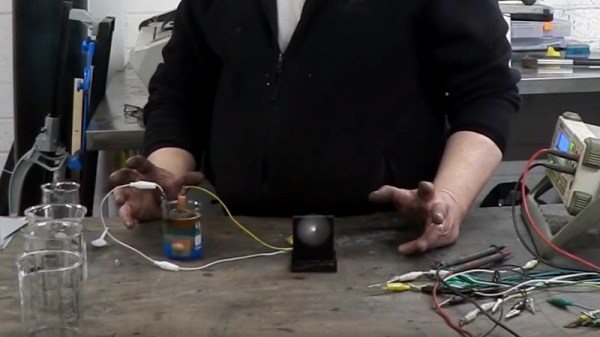The internet is full of dubious content promoting “free energy” devices and other ideas that stretch credibility, so [Robert Murray-Smith] prefaces his demonstration of a gravity battery with a warning to look elsewhere if you are in search of such things. Instead he’s showing us a pair of cells from The Model Engineer and Amateur Electrician, a printed periodical that sounds to us something like an equivalent of Hackaday from the 1890s. (Video embedded below.)
The cells are termed gravity batteries because their constituents settle out into layers not unlike a tequila sunrise under the influence of gravity, something that made them especially suitable for the home constructor in the late 19th century when there were no handy wall outlets from which to snag a bit of power.
The chemistry of each is not unexpected if you spent any time in your high school’s lab, a zinc-copper primary cell with a zinc sulphate/copper sulphate electrolyte and a secondary zinc-carbon cell with a zinc bromide electrolyte and a layer of bromine forming on charging. The construction in large glass vessels is archaic though, and it’s this that’s prompted his video. He poses the question whether this type of cell might be revived using 21st century techniques to produce something of use today. The video is below the break, and even if you are not about to try your hand at electrochemistry it’s an interesting watch.
Thanks [Blaubär] for the tip! Continue reading “The 19th Century, When Gravity Battery Meant Something Different”











